Do Lions Cannibalize? A Dive Into Feline Survival Tactics
The animal kingdom, with its abundance of diverse behavior, challenges our comprehension and sometimes, even our sensibilities. One such challenging behavior is cannibalism.
Though unusual, this practice is not exclusive in the wild, and surprisingly, one of the most magnificent and regal creatures, the lion, is known to partake in it. This exploration dives into the complex society of lions, their feeding habits and the instances of cannibalism observed among them.
Drawing parallels with broader cannibalistic patterns in the animal kingdom, we reflect on the specific triggers and benefits of such behavior in lions. A comprehensive grasp on these aspects grants us a better understanding and respect for the harsh realities of survival in the wild that these majestic beasts face.
Lion Behavioral Patterns
Lion Behavioral Patterns: An exploration of lion social behavior
Lions are generally known for their pack, or pride, behaviors. These large cats are the only members of the big cat family to live in organized groups. Prides typically consist of related females and their cubs, while unrelated adult males form coalitions that compete for control of a pride.
Territorial disputes and maintaining social cohesion within the pride are top priorities for lions. Roaring, scent marking, and physical displays are commonly employed tools to proclaim ownership of a territory and to intimidate competitors. Conflicts between prides or coalitions can often result in brutal battles, leaving some lions injured or even dead.
Intra-Species Predation amongst Lions
As natural carnivores, lions’ primary source of food comes from hunting other animals. They go after a wide variety of prey, ranging from small animals like rodents, birds, and hares to large creatures like wildebeests, zebras, and buffalo. But do lions eat other lions? The answer is not as straightforward as it might seem.
Lions are not generally cannibalistic by nature. However, extreme circumstances such as scarcity of food or severe territorial disputes can drive them towards intra-species predation, which includes instances of lions eating other lions. This kind of behavior is typically rare and regarded as a last resort.
In terms of ordinary, everyday behaviors, adult male lions do sometimes kill the offspring of rivals when they take over a pride. This infanticide rids the pride of offspring not sired by the incoming males, and triggers the females’ estrous cycle, allowing the new males to mate and produce their own progeny. Although the killing of cubs can be seen as a form of intra-species predation, the males do not typically consume the cubs they kill.
Lions’ Scavenger Behavior and Dietary Habits
It’s crucial to remember that lions, while typically known as robust hunters, may also engage in opportunistic scavenging. In times of food scarcity, or when a meal is readily available, they may supplement their diets by scavenging. Notably, this behavior can even stretch to consuming the remains of other lions, should no other food sources be available.
Evidently, these are extreme scenarios and demonstrate that lions eating other lions, albeit rare, can occur. Still, it isn’t an everyday part of their diet or behavior, nor does it play a significant role in their ecological standing as apex predators.
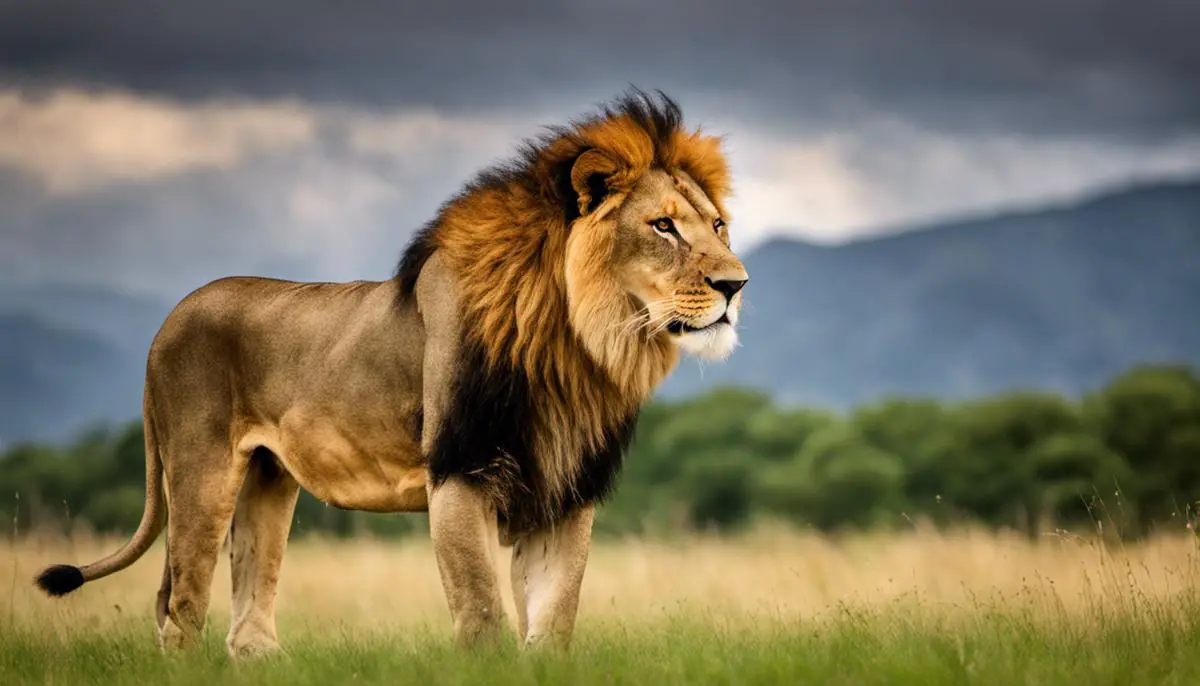
Feeding Habits of Lions
Detailed Breakdown of Lions’ Dietary Preferences and Habits
As apex predators, lions predominantly consume meat-based diets, with large ungulates such as zebras, buffaloes, giraffes, and wildebeests being their main source of food. Their hunting abilities are amplified by their strong social structures and collaborative hunting techniques, allowing them to subdue prey much larger than themselves.
That said, lions’ diets can vary extensively. In addition to large game, lions may feed on smaller animals, like birds, reptiles, and rodents, if bigger prey is not available. Instances of lions resorting to fruit and vegetation have also been observed, but such incidents are rather exceptional and typically result from intense food shortages.
Lions’ dietary habits are influenced significantly by their current location and the plethora of prey available within that setting. For instance, lions residing in savannah environments and those in forested areas may exhibit different diets—owing to the varying availability and types of prey.
Intra-specific Predation among Lions
While lions, in general, are not known for cannibalistic behavior, certain unique circumstances can lead to intra-specific predation, which refers to members of the same species preying on each other. Major causes for this behavior in lions include territorial disputes, scarcity of food, and usurpation of pride.
During pride takeover, the new male lion often kills the cubs sired by the former leader to accelerate the reproduction process with the lionesses of the pride. In some extreme cases, the victor lion might resort to eating the killed cubs. This behavior is primarily driven by the need to establish dominance rather than to satiate hunger. Moreover, adult lions may occasionally eat the remains of a deceased sibling or mate, especially when food resources are very scarce.
Additionally, younger lions, especially the ones who have been ousted from their pride, face a scarcity of food due to lack of hunting skills. This makes them more likely to consume other lions if the opportunity arises.
Understanding Variation in Predatory Behavior
Contrary to common assumptions, lions do not typically prey on their own kind. The phenomenon of lions eating other lions, otherwise known as cannibalism, mostly occurs under extraordinary conditions. This unusual behavior typically takes place when there is an imbalance in the ecological order or extreme food scarcity.
Lions, like many other animals, are predominantly influenced by their environment and the availability of prey when it comes to their dietary habits. Generally, they indulge in a carnivorous diet that includes large ungulates and smaller mammals. However, when food is scarce, lions have been known to seek unconventional sources of nourishment, including other lions, though such instances are few and far between.
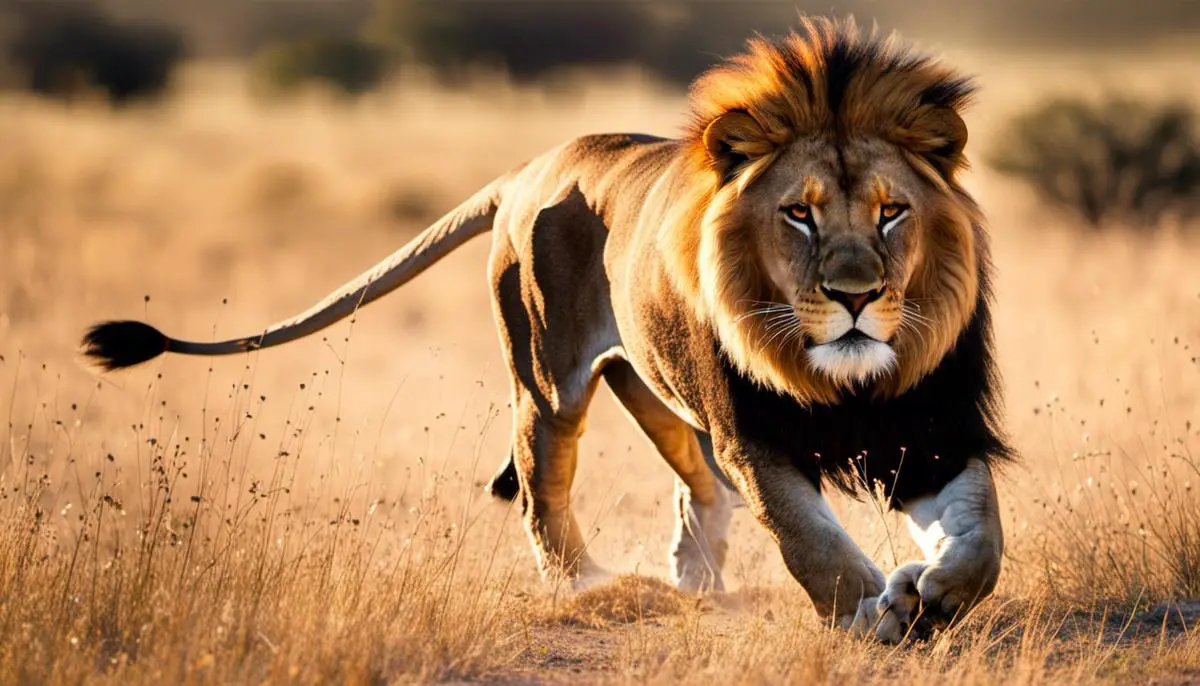
Cannibalism in Animal Kingdom
Cannibalism: A Last Resort Survival Strategy Among Animals
Cannibalism—where an animal kills and consumes members of its own species—is a behavior noted across the animal kingdom, prominently amongst insects, amphibians, and mammals. This act is not a mark of savagery but rather a response to severe biological necessities. Lack of food, limited mating opportunities, or the need to control overpopulation are often the driving factors behind this act.
Why and When Animals Resort to Cannibalism
Animals may resort to cannibalism for various reasons. In many cases, it’s a matter of survival. When food supplies are low, some animals may turn to their own kind as a last-ditch effort to stay alive. Other times, taking out potential rivals can increase an animal’s chance of passing on its genes. Newborn creatures, especially when born in large numbers, have higher chances of being eaten by their own parents or siblings based on the supply of nutrients at that time.
Lions and Cannibalism
In the case of lions, cannibalism isn’t a regular part of their behavior. Lions typically prey on other species, such as antelopes or gazelles. However, like many other animal species, lions can also resort to cannibalism when times are hard and food is scarce.
Dominance and the Lion’s Survival Strategy
Additionally, male lions have been noted for their aggressive behavior toward other male lions, especially when it comes to taking over a pride. A new male, after successfully challenging and often killing the leading male, may kill all the previous leader’s cubs and/or young adolescents. This is not primarily for consumption, but rather a strategy to ensure his own genetic dispersion through the future offspring.
Lions may also resort to cannibalism when facing threats from within their own pride. For example, if a lion is injured and can’t defend itself, other lions may see this as an opportunity to eliminate potential competition and secure their position within the pride.
Cannibalism as a Survival Strategy
While it’s a harsh and brutal behavior, cannibalism may ensure the survival of the species when resources are limited or competition for those resources is fierce. For lions, cannibalism is not the norm, but rather a last resort or a strategy for dominance that ensures the survival and growth of their own genetic lineage.
By looking at the bigger picture, we can understand that even the strictest behavior patterns can be shifted by survival needs. The seemingly ruthless act of cannibalism reflects the harsh realities of life in the wild, while showcasing the instinct for survival, propagation, and struggle for dominance in the animal kingdom.
The Integration of Cannibalism and Cooperation within the Animal Kingdom
Within the animal kingdom, fascinatingly, species can display both cannibalistic tendencies and incredible levels of cooperation and social interactions. Observations of lion prides illustrate these interconnected behaviour dynamics. For example, lionesses have been known to work in collaboration to hunt prey, raise their offspring, and guard their territories.
Such behavioural diversity highlights a critical mechanism: animals employ a spectrum of survival strategies, extending from fierce competitiveness to sophisticated cooperation. Be it cannibalistic behaviour or cooperative efforts, these survival techniques are all geared towards the ultimate goal of species preservation amidst harsh environmental pressures.
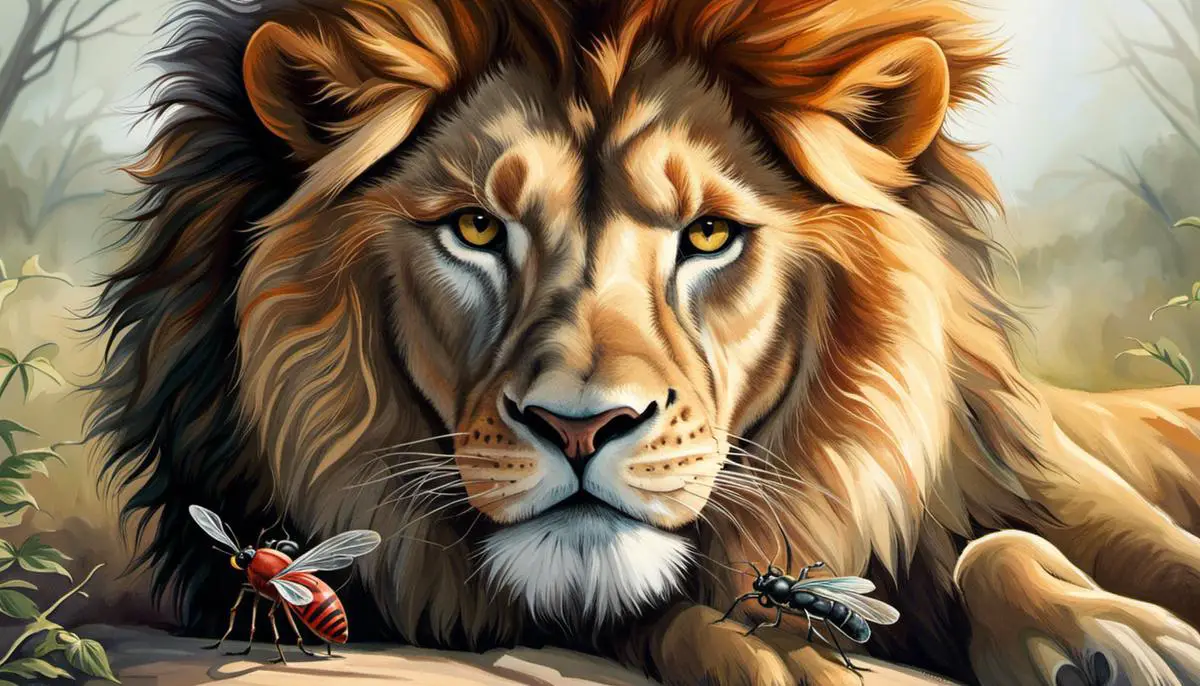
Factors Leading to Lion Cannibalism
Exploring Instances of Cannibalism amongst Lions
Whilst cannibalism, the act of feeding on members of the same species, is not a routine aspect of lion conduct, it does occur under specific conditions. Generally, lions prefer to hunt a variety of large animals within their territory. However, under certain situations, triggered by factors such as environmental stress, territorial discord, the assertion of dominance, or scarcity of food, lions have been observed engaging in cannibalistic behaviour.
Triggers and Circumstances Leading to Cannibalism
Lion cannibalism often occurs as a result of the high-stress situations and behavioral specifics of the species. When territorial disputes arise among male lions, the disputes can be fatal and sometimes result in the winner consuming the loser. In other instances, while showing dominance, invading lions can kill and consume the cubs of the defeated male to eradicate the previous generation’s genetic line.
Scarcity of Food and Environmental Stress
Another factor that triggers cannibalism is a scarcity of food. In times of drought or reduced availability of usual prey, lions, driven by the primal instinct to survive, can resort to eating other lions, especially lion cubs, to fulfill their nutritional requirements. Aside from food scarcity, other factors like severe environmental changes or the presence of illnesses or diseases can also lead lions to cannibalism due to added stress on the group or individual.
Reported Cases of Lion Cannibalism
Findings from various researchers and wildlife observers have attested to the cases of lions resorting to cannibalism. For instance, in the Serengeti and Ngorongoro Crater, infanticide and cannibalism were reported on numerous cases when a coalition of males took over a pride. Additionally, in cases where male lions have been ousted from their pride and become wanderers, they are known to engage in cannibalistic behavior driven by desperate hunger and survival instincts.
Understanding Lion Cannibalism: Survival Factors
Lion cannibalism is not a common practice but happens chiefly due to extreme factors such as dominance disputes, territorial conflicts, or food shortages. These occurrences although brutal, may possess some survival advantages for the lion kingdom. For example, new pride leaders who kill and eat the offspring of their predecessors thwart the continuation of the predecessor’s lineage, thereby creating a better chance for their own progeny to prosper. Likewise, during periods of food scarcity, they may resort to cannibalism as a last resort for survival. Remember, cannibalism is not a typical or natural feeding pattern for lions but an extreme measure taken in dire conditions.
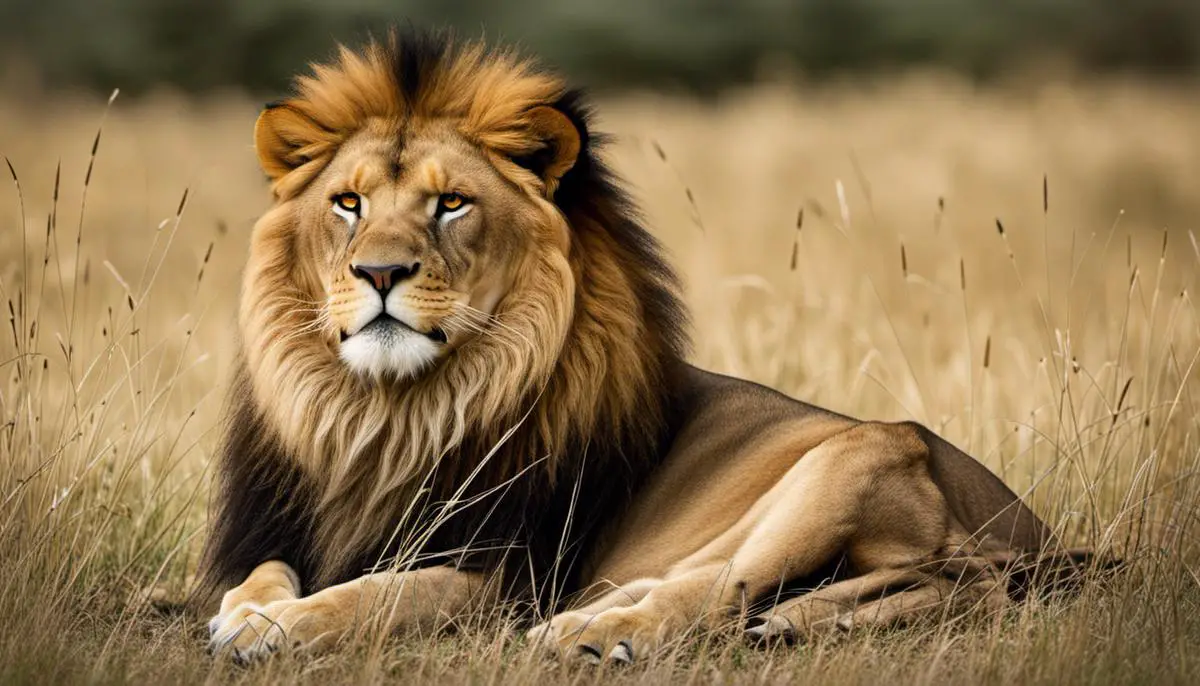
Impact and Sustainability of Lion Cannibalism
Elaborating on Lion Cannibalism: A Gruesome Survival Tactic
Indeed, lions have been observed to eat other lions, albeit infrequently. This cannibalistic behavior is particularly evident in male lions who, upon taking control of a pride, will often kill and devour the cubs sired by the previous leader. This brutal practice serves as a survival tactic designed to eliminate the former male’s lineage, thereby clearing the path for the new male to foster his own bloodline without delay. As harsh as it may sound, it is a part of these majestic creatures’ fight for survival in the wild.
Potential Impact on Lion Prides
On an immediate note, cannibalism among lions can devastate a pride, especially if it loses significant numbers of its cubs at once. This act can create imbalance within the pride dynamics and cause stress among the existing members, affecting their general well-being and potential reproductive success. On a larger scale, this cannibalistic behavior may indirectly contribute to genetic diversity as it ensures that only the fittest and most competitive males get to propagate their genes.
Sustainability of Cannibalism as a Survival Strategy
Assessing the sustainability of cannibalism as a survival strategy yields complex insights. At one end, cannibalism ensures the survival of the strongest by allowing the strongest lions to breed and pass on their genes. On the other hand, excessive cannibalistic practices pose a risk to the overall population. If a pride is consistently threatened by incoming males, the repeated loss of cubs can lead to a decline in the size and vitality of the pride over time. It is a balancing act, affected by numerous ecological and environmental factors, in which nature attempts to maintain equilibrium.
Threats to Lion Population due to Cannibalistic Behavior
Due to the ever-shrinking habitats and increasing human-animal conflict, there has been an inevitable rise in intra-species encounters amongst lions, with potential increases in cannibalism. If this trend continues unchecked, it could lead to a drastic reduction in the lion population. Certainly, there is an increased risk of injury and death when fights occur, but this also affects the stability of prides, which could lead to lower birth rates and higher mortality rates among cubs – a significant threat to the survival of the species in the long run.
Interpreting Cannibalism in Lions
Interpreting cannibalism in lions requires a balanced understanding of nature’s processes. While it represents a brutal survival strategy, it is also part of the myriad ways that natural systems create balance and promote competition. However, it is crucial to monitor such actions due to the potential they have to negatively influence the lion population, especially in the current scenario of shrinking habitats and increasing human infringement upon their territories.
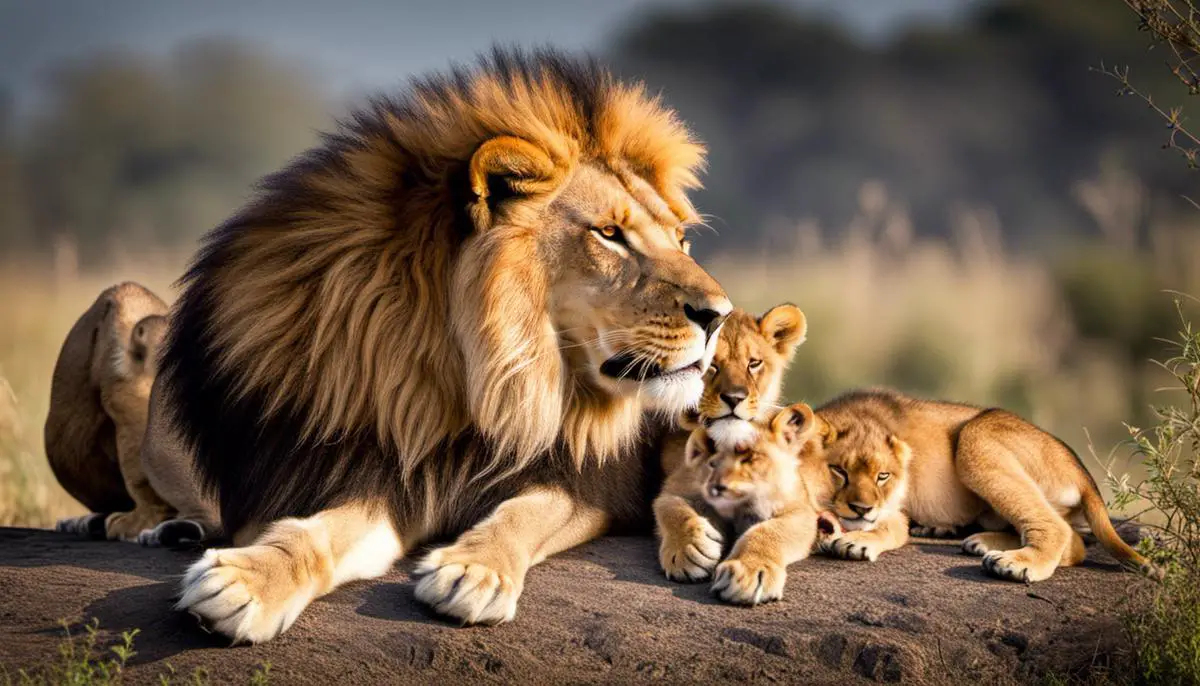
The complex world of lion social dynamics and behaviors, accentuated by cases of cannibalism, underscores the harsh and often brutal survival strategies that exist in the natural world. However, the sustainability and long-term impact of such practices, specifically cannibalism, offer a significant cause for concern. This raises pertinent questions regarding the overall survival of the species. Understanding these intricate aspects of lion behavior, their responses to resource scarcity and stress, and the wider implications of their actions, not only offers fascinating insights into their lives but also emphasizes the need for greater conservation efforts to ensure their continued presence in our planet’s ecosystems.

